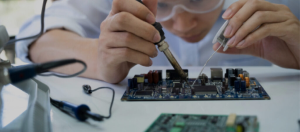After working with hundreds of medical device clients over the years, I’ve seen the same painful pattern repeat itself: brilliant entrepreneurs with groundbreaking ideas who’ve budgeted $100,000 for what will actually cost them several hundred thousand dollars minimum.
The result? Teams spending weeks on discovery and proposal work, only to watch potential clients walk away when they see the real numbers. It’s heartbreaking for everyone involved, but more importantly, it’s completely avoidable if you understand the true economics of medical device development from day one.
The Math That Changes Everything
Let’s start with the numbers that matter. Current US engineering rates conservatively sit at $200 per hour. Do the math on that $100,000 budget you’ve been carrying around:
$100,000 ÷ $200/hour = 500 hours of development time
That’s one person working full-time for about 12 weeks. Twelve weeks. For a complete medical device.

Think about that for a moment. Could you build a smartphone in 12 weeks with one person? A car? Of course not. Yet somehow, we expect to develop devices that will literally save lives, navigate complex regulatory pathways, and compete in sophisticated markets with the same resources.
Why One Person Isn’t Enough (And Never Will Be)
Here’s where the budget reality gets even more sobering. Medical device development isn’t a solo endeavor. You’re not building a simple consumer product—you’re creating something that must work flawlessly in the most demanding environments imaginable.
Every medical device project requires multiple specialized skill sets:
Electrical Engineering: Someone has to design the circuits, select components, ensure electromagnetic compatibility, and handle power management. This isn’t breadboard-level work—it’s precision engineering where a single component failure could mean the difference between life and death.
Firmware Development: Your device needs software that’s not just functional, but bulletproof. Medical device firmware must handle edge cases, fail gracefully, and meet stringent regulatory requirements for software validation.
Mechanical Engineering: The physical design, materials selection, stress analysis, and manufacturability assessment. Your device has to survive drops, temperature variations, sterilization cycles, and years of daily use.
Industrial Design: User interface design isn’t just about making things look pretty—it’s about ensuring that stressed healthcare workers can use your device correctly under pressure, in poor lighting, with gloves on.
Regulatory Affairs: Someone who understands FDA pathways, can write technical documentation, and knows how to navigate the approval process without costly delays.
Now take that 500-hour budget and divide it among these essential disciplines. Suddenly, you’re looking at 100 hours per specialty—less than three weeks of full-time work each.

The Wireless Data Collection Reality
Let’s make this concrete with a real-world example. Say you want to develop a wireless data collection device for hospitals—something that seems relatively straightforward compared to an implantable device or surgical instrument.
Here’s what “straightforward” actually looks like:
Electronics Design (200+ hours): Circuit design, component selection, PCB layout, power management, wireless communication protocols, sensor integration, electromagnetic compatibility testing, and multiple design iterations based on testing results.
Firmware Development (300+ hours): Real-time operating system implementation, wireless protocol stacks, sensor data processing, power optimization, error handling, bootloader development, and extensive testing across operating conditions.
Mechanical Design (150+ hours): Enclosure design, materials selection, thermal analysis, drop testing, ingress protection rating, mounting solutions, and design for manufacturing optimization.
Industrial Design (100+ hours): User interface design, ergonomics analysis, human factors testing, labeling requirements, and accessibility compliance.
Regulatory Documentation (200+ hours): Risk analysis, design controls documentation, software validation, biocompatibility assessment, clinical evaluation, and FDA submission preparation.
Testing and Validation (300+ hours): Environmental testing, electromagnetic compatibility, wireless certification, software validation, usability testing, and design verification testing.
We’re already at 1,250+ hours, and we haven’t even talked about project management, quality assurance, or the inevitable design iterations that come from real-world testing.
At $200/hour, that’s $250,000 minimum—and this is for a relatively “simple” device.

The Hidden Multipliers
The sticker shock doesn’t end with development hours. Medical devices come with hidden multipliers that consumer products simply don’t face:
Regulatory Compliance: Every design decision must be documented, justified, and validated. That elegant solution you implemented in two hours? Plan to spend eight hours documenting why you chose it and proving it works reliably.
Testing Requirements: Medical devices must work not just in ideal conditions, but across temperature ranges, humidity levels, electromagnetic environments, and mechanical stresses that would destroy typical consumer electronics.
Design Controls: Unlike software development where you can “move fast and break things,” medical device development requires formal design controls at every stage. Every change requires documentation, review, and approval.
Risk Management: ISO 14971 requires systematic risk analysis throughout development. Every potential failure mode must be identified, analyzed, and mitigated—then documented and tested.
What This Means for Your Budget
If you’re serious about medical device development, here’s the honest truth about minimum viable budgets:
Class I Device (lowest risk): $150,000 – $300,000 for development, assuming minimal clinical requirements and straightforward regulatory pathway.
Class II Device (moderate risk): $300,000 – $800,000 for development, including clinical evaluation, predicate device analysis, and 510(k) submission.
Class III Device (highest risk): $1,000,000+ for development, with extensive clinical trials, PMA submission, and comprehensive safety validation.
These numbers are for development only. They don’t include manufacturing setup, tooling, inventory, clinical trials, or commercialization costs.

-
- Class I: $150K-$300K (green)
-
- Class II: $300K-$800K (yellow)
-
- Class III: $1M+ (red) Each bar shows internal breakdown of costs (Development, Regulatory, Testing, Documentation)]
The Path Forward
Does this mean you should give up on your medical device idea? Absolutely not. But it does mean you need to approach funding and development with realistic expectations from day one.
In our next article, we’ll talk about the “fuel problem”—why running out of money kills more medical device startups than bad ideas—and what you can do to ensure your brilliant concept has the resources it needs to reach patients who need it.
The medical device industry needs innovative solutions and passionate entrepreneurs. But it also needs entrepreneurs who understand the real economics of bringing life-saving technology to market. Now you’re one of them.



